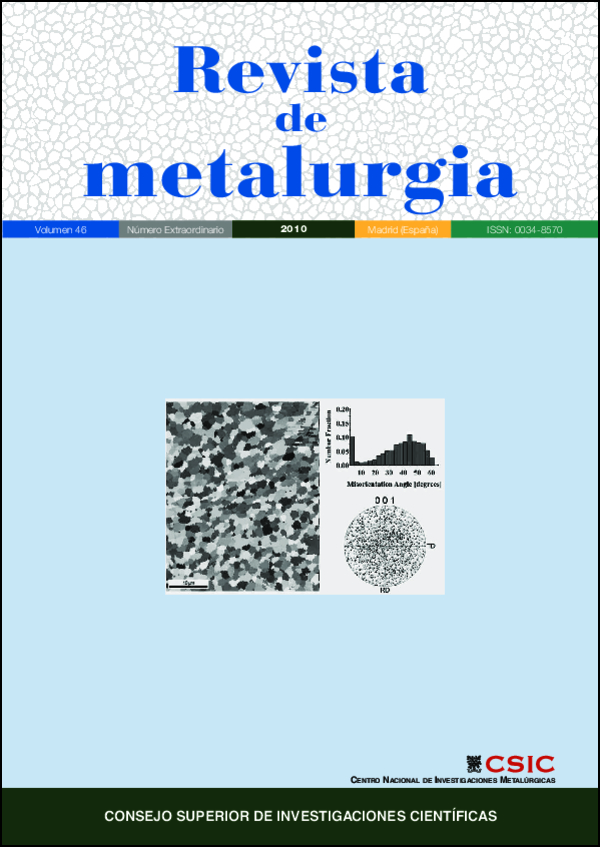Test equipment and methodology for die material service life evaluation
DOI:
https://doi.org/10.3989/revmetalmadrid.10.1XIIPMSKeywords:
Thermal fatigue, Steel, Die, Die casting, Pressure castingAbstract
Dies used in the non ferrous die casting process, have a limited service life due to the damage effect by surface cracking appearance. These cracks are mainly produced by thermal fatigue, which are promoted by a repeated heating and cooling process through working cycles. The existing demand to improve materials to extend the die’s service life leads to the development of new equipments to test the material behaviour. INASMET-TECNALIA in collaboration with FEAF (Spanish Federation of the Foundry Associations), has developed a testing machine to evaluate the thermal fatigue behaviour of steels used to manufacture dies. This testing machine is able to test forty samples simultaneously, getting a remarkable advantage in regard to previous developed test equipment. The versatility of heating and cooling system makes possible to test all kind of materials in very different thermal fatigue conditions.
Downloads
References
[1] B. Kosec, Metalurgija 47 (2008) 51-55.
[2] D. Klobccar, J. Tusek y B. Taljat, Mater. Sci. Eng. 472 (2008) 198-207. doi:10.1016/j.msea.2007.03.025
[3] J. Papai y C.Mobley, Trans. 16th Int. Die Casting Cong. Exp. NADCA, Detroit, Michigan, EE. UU., 1991, pp. 377-384.
[4] D. Schwan, J.F. Wallace y S. Birceanu, Final Technical Report, 2004. Department ofMaterials Science: Case Western Reserve University. Cleveland, Ohio, EE. UU., 2004.
Downloads
Published
How to Cite
Issue
Section
License
Copyright (c) 2010 Consejo Superior de Investigaciones Científicas (CSIC)

This work is licensed under a Creative Commons Attribution 4.0 International License.
© CSIC. Manuscripts published in both the printed and online versions of this Journal are the property of Consejo Superior de Investigaciones Científicas, and quoting this source is a requirement for any partial or full reproduction.
All contents of this electronic edition, except where otherwise noted, are distributed under a “Creative Commons Attribution 4.0 International” (CC BY 4.0) License. You may read the basic information and the legal text of the license. The indication of the CC BY 4.0 License must be expressly stated in this way when necessary.
Self-archiving in repositories, personal webpages or similar, of any version other than the published by the Editor, is not allowed.
















